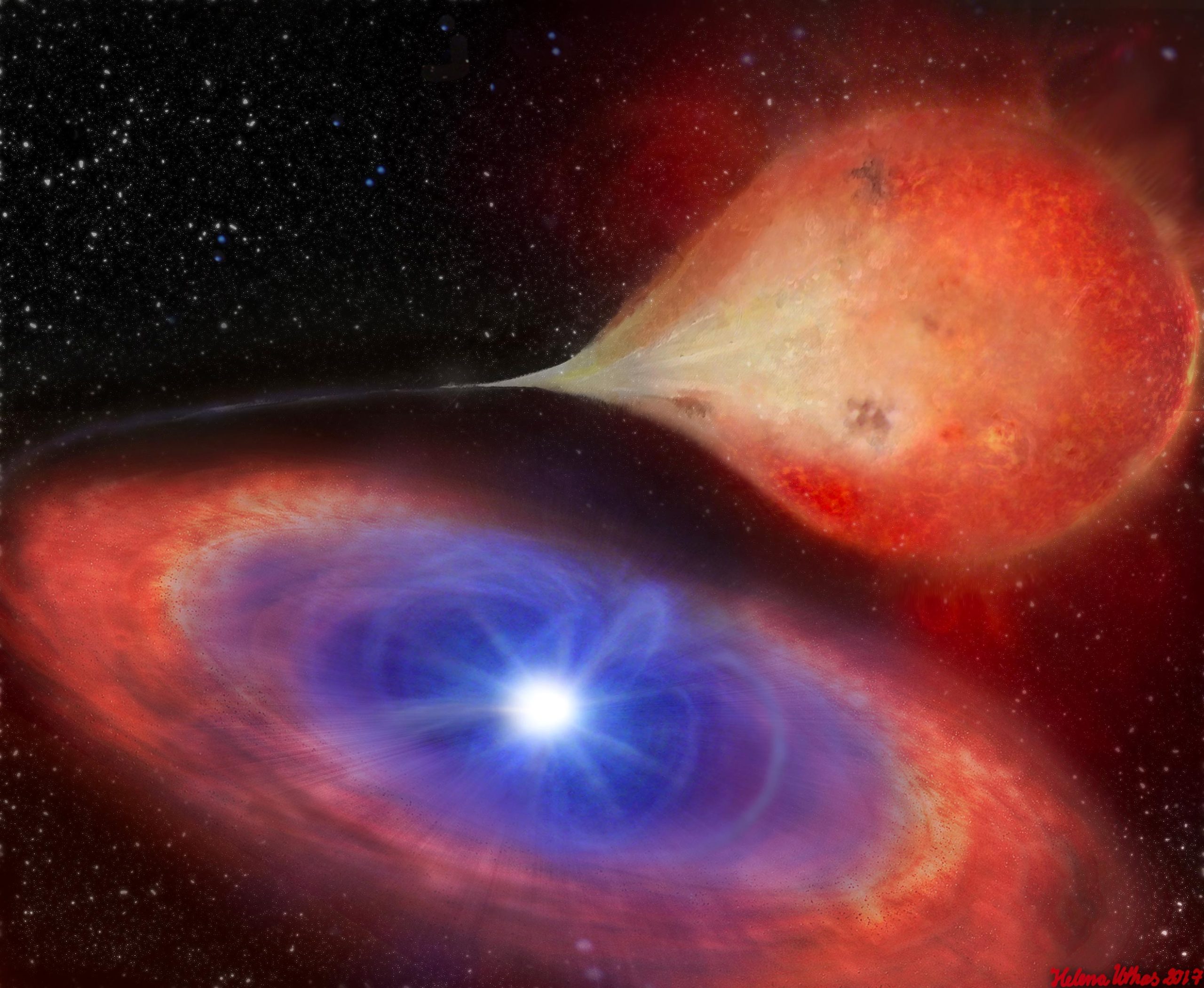
As the white dwarf eats – or accretes – it becomes brighter.
Using the precise observational detail offered by TESS – normally used to look for planets outside our solar system – the Durham-led team saw abrupt falls and rises in brightness never before seen in an accreting white dwarf on such short timescales.Because the flow of material onto the white dwarf’s accretion disc from its companion star is relatively constant it should not drastically affect its luminosity on such short timescales.Researchers led by Durham University, UK, used TESS to observe the white dwarf binary system TW Pictoris.
During the “on” mode, when the brightness is high, the white dwarf feeds off the accretion disc as it normally would.The researchers say that when this happens the magnetic field is spinning so rapidly that a centrifugal barrier stops the fuel from the accretion disc from constantly falling onto the white dwarf.In this case, the spinning magnetic field of the white dwarf regulates the fuel passing through a “gate” onto the accretion disc, leading to semi-regular small increases in brightness seen by the astronomers.Simone Scaringi, in the Centre for Extragalactic Astronomy, at Durham University, UK, said: “The brightness variations seen in accreting white dwarfs are generally relatively slow, occurring on timescales of days to months.
“To see the brightness of TW Pictoris plummet in 30 minutes is in itself extraordinary as it has never been seen in other accreting white dwarfs and is totally unexpected from our understanding of how these systems are supposed to feed through the accretion disc.As white dwarfs are more common in the Universe than neutron stars, the astronomers hope to look for other examples of this behavior in future research projects to learn more about accretion.